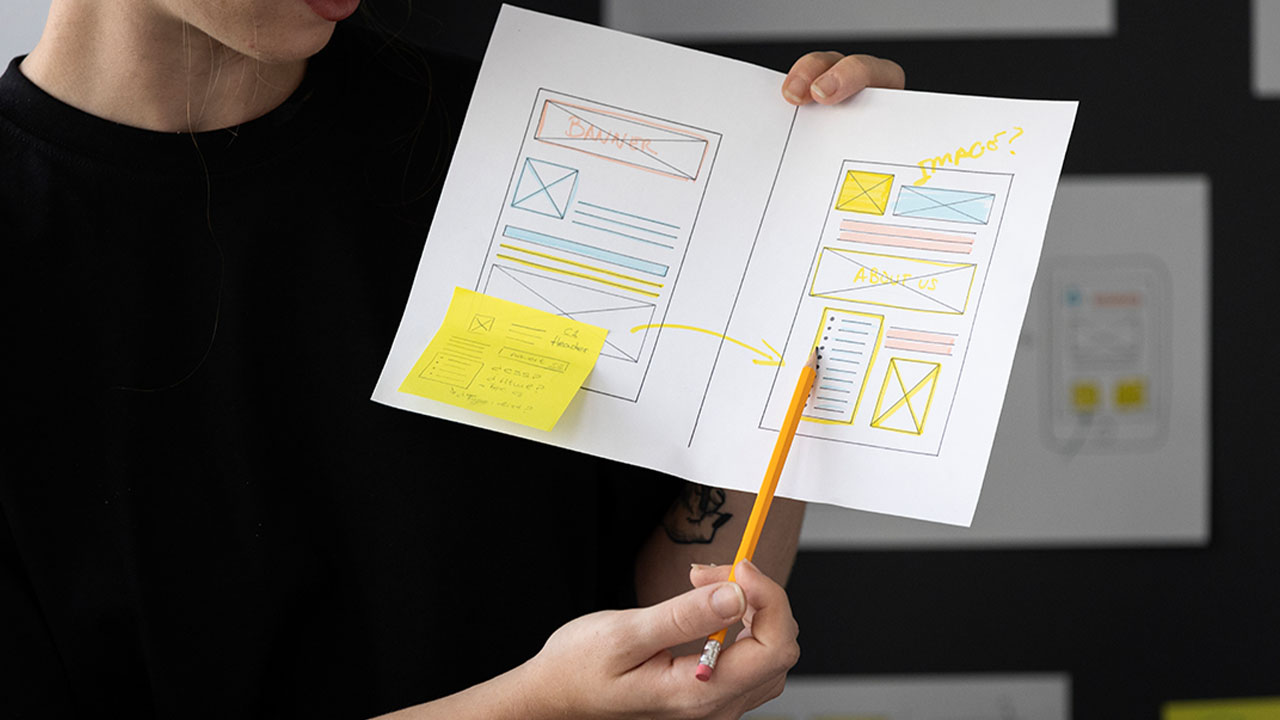In today’s fast-paced digital world, businesses must create seamless and engaging experiences for their users and customers. This is where UX (User Experience) and CX (Customer Experience) design come into play. While both UX and CX share the same overarching goal to improve user satisfaction and drive business success they differ in scope and focus. UX design centres on the usability and functionality of digital products, while CX design focuses on the entire journey of a customer with a brand across all touchpoints.
Understanding how UX and CX design work together can help businesses create experiences that are not only usable but also delightful. In this article, we’ll explore the UX/CX design process, from the initial research phase to final implementation, to understand how each step plays a critical role in crafting exceptional experiences.
1. What is UX/CX Design?
UX Design
User Experience (UX) design refers to the process of designing digital products, such as websites, apps, and software, with a focus on the usability, accessibility, and overall experience of the user. It aims to create a smooth, intuitive, and engaging interaction between the user and the product. UX design is all about improving the functionality of a product and ensuring that users can navigate and complete their tasks efficiently.
CX Design
Customer Experience (CX) design is a broader concept that focuses on the entire experience a customer has with a brand, both online and offline. It encompasses every interaction, from browsing the website or app to customer service inquiries, product delivery, and post-purchase experiences. The goal of CX design is to build a holistic, seamless, and emotionally positive journey that encourages brand loyalty and customer satisfaction.
2. The UX/CX Design Process: From Research to Implementation
The UX and CX design process involves several stages that help designers understand user needs, define problems, and develop solutions that provide a positive experience. These stages can vary depending on the project or company, but they generally follow a common framework: Research, Design, Prototyping, Testing, and Implementation.
Step 1: Research & Discovery
The first step in any UX or CX design process is thorough research. Without a deep understanding of the users and their needs, it is impossible to create effective designs. Research helps uncover pain points, goals, and expectations, ensuring that the design meets real user needs. Both UX and CX research typically involve the following methods:
- User Interviews: Speaking directly with users to gather insights into their motivations, challenges, and preferences.
- Surveys: Collecting data from a larger sample of users to quantify behaviours and preferences.
- Competitor Analysis: Analyzing competitors' products and customer experiences to identify gaps or opportunities for improvement.
- Persona Creation: Developing user personas based on research to represent different user types, behaviours, and goals.
The research phase sets the foundation for all subsequent design decisions. For CX design, this phase also involves looking at the entire customer journey, identifying key touchpoints, and understanding the emotional highs and lows customers experience when interacting with the brand.
Step 2: Defining the Problem & Setting Objectives
Once the research is complete, the next step is to define the problem you are trying to solve and set clear objectives for the design. This is where the designer translates insights from the research phase into actionable goals. In UX, this often involves identifying user pain points and developing a user journey map to outline the steps users take to complete tasks.
For CX, designers need to map out the full customer journey, identifying every touchpoint from pre-purchase to post-purchase. It’s crucial to understand not only how customers interact with your digital product but also with your customer support, packaging, and marketing materials. This stage is also where businesses identify opportunities for improving or creating new experiences.
Step 3: Ideation & Concept Development
In this phase, designers begin to brainstorm solutions to the problems defined earlier. It involves generating a range of ideas and possible design concepts that could help address the users' pain points and meet the project goals. This is a collaborative phase, where cross-functional teams may come together to share ideas.
For UX design, this stage may involve sketching wireframes, user flows, or information architecture to outline how users will interact with the product. For CX design, the ideation phase may also involve brainstorming new customer touchpoints or ways to improve existing interactions across channels.
Contact us today to discuss how our ux cx design service can transform your business and enhance your visual identity. Let’s bring your ideas to life with stunning animations and creative visuals!
- Explore Our Work: Our Work
- Reach Out Today: eCare Infoway
Step 4: Prototyping & Wireframing
Once the best ideas are selected, designers begin to create prototypes and wireframes. A wireframe is a low-fidelity visual representation of the product layout, showing key elements like buttons, menus, and content hierarchy. It’s a crucial tool in UX design because it helps designers define the structure of the user interface.
designers define the structure of the user interface. Prototypes are more interactive versions of the design, allowing stakeholders and users to experience the design’s functionality before it’s built. In CX design, prototypes may focus on different customer interaction points (e.g., a chatbot for customer support or a new checkout flow).
Step 5: User Testing & Feedback
At this stage, the design is tested with real users to gather feedback on usability, functionality, and overall experience. User testing is a critical part of both UX and CX design, as it helps identify areas for improvement before the final design is implemented.
UX designers typically conduct usability tests, where users perform tasks using the prototype, while the designer observes their behaviour. In CX testing, businesses might conduct customer satisfaction surveys or evaluate how customers perceive their entire journey with the brand.
Step 6: Implementation
Once user feedback has been integrated into the design, it’s time for implementation. This involves bringing the design to life through development and coding. For UX design, this means turning wireframes and prototypes into fully functional websites or apps. For CX, this could involve aligning different teams to ensure the customer journey is consistent across all touchpoints, from the website to customer service interactions.
Step 7: Continuous Improvement
Even after launch, the UX and CX design process doesn’t end. Both fields rely heavily on continuous monitoring, analysis, and iteration. Collecting user feedback and measuring key performance indicators (KPIs) helps designers identify areas for improvement. A/B testing, customer satisfaction surveys, and usability testing are all part of ongoing efforts to optimise and refine the experience.
Also learn more about the UI vs UX
3. Why is UX/CX Design Important?
Both UX and CX design play an essential role in the success of a business. They help to improve customer satisfaction, reduce churn, and increase engagement. Effective UX design ensures that users can easily navigate and interact with digital products, while strong CX design creates a seamless, enjoyable journey across all brand touchpoints.
When UX and CX are executed well, they lead to better customer retention, increased sales, and enhanced brand loyalty. Additionally, businesses that invest in thoughtful design can differentiate themselves from competitors and create positive, lasting impressions with their customers.
Conclusion: Creating a Seamless Experience from Start to Finish
The UX and CX design process may seem complex, but when broken down into manageable steps, it becomes clear how essential each stage is to crafting meaningful and effective experiences. From research to testing, every phase of the design process ensures that users and customers will encounter a seamless, intuitive, and positive experience with your product or service.
By focusing on both UX and CX, businesses can improve usability, enhance customer satisfaction, and build long-term relationships that drive success. Whether you are working on a digital product or refining your overall customer experience, understanding and applying the UX/CX design process is the key to delivering exceptional outcomes.




